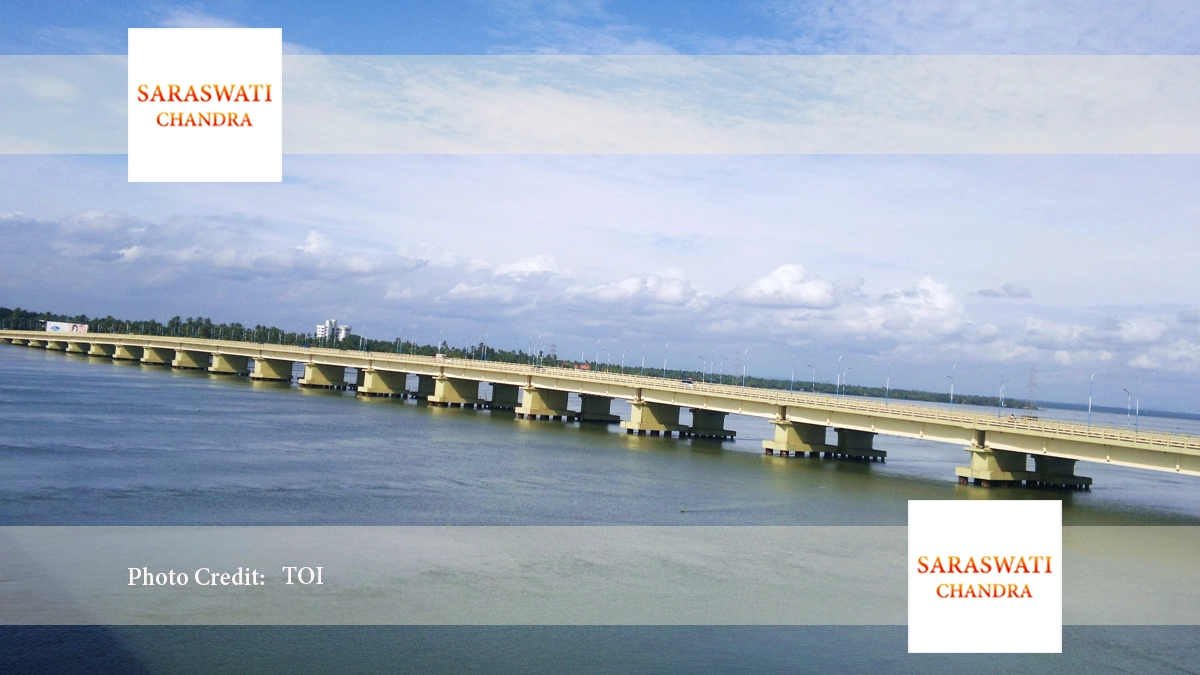Vembanad Railway Bridge: India’s Longest Railway Bridge Over Water
The Vembanad Railway Bridge, located in Kerala, is a remarkable engineering feat that holds the distinction of being the longest railway bridge over water in India. Spanning the Vembanad Lake, this iconic bridge is a crucial part of the Kochi–Kottayam–Mannarkkad Railway Line and plays a significant role in enhancing the connectivity and economic development of the region. Its construction and design are a testament to the skill and ingenuity of Indian engineers.
A Brief Overview of Vembanad Railway Bridge
The Vembanad Railway Bridge stretches for 4.62 kilometers across Vembanad Lake in the picturesque state of Kerala. This bridge is vital for the Indian Railways network as it provides uninterrupted rail services between Kochi and Kottayam, linking the interior regions of Kerala with the rest of the country.
As India’s longest railway bridge over water, the Vembanad Bridge has gained national and international attention due to its sheer scale and the challenges faced during its construction. The bridge plays a critical role in both the transportation of goods and passengers, significantly boosting regional trade and tourism.
Key Features of the Vembanad Railway Bridge
- Location and Design
The bridge is strategically positioned over the Vembanad Lake, one of the largest lakes in Kerala. The lake’s rich biodiversity and proximity to popular tourist destinations make this bridge even more significant. The design of the Vembanad Railway Bridge is a combination of robust engineering and aesthetic appeal. The bridge is constructed using a combination of reinforced concrete and steel, ensuring long-term durability while blending seamlessly with the scenic surroundings. - Structural Engineering Marvel
The Vembanad Railway Bridge’s construction involved overcoming several engineering challenges, including fluctuating water levels, the region’s unique weather conditions, and the need to preserve the environmental balance of the lake. Its foundation piles are anchored deep into the lakebed to support the massive structure, which spans the entire width of the lake. The bridge consists of several piers, beams, and arches to ensure stability and safety for the trains crossing it. - Boosting Connectivity and Economy
This bridge has not only improved the transportation of passengers but also facilitated the movement of goods, such as agricultural products and raw materials, between the northern and southern parts of Kerala. By connecting the coastal city of Kochi to the interior regions, it has enhanced local commerce and tourism, drawing more visitors to Kerala’s vibrant culture and natural beauty. - Environmental Considerations
One of the remarkable aspects of the Vembanad Railway Bridge is its minimal environmental impact. The bridge’s design took into account the protection of the lake’s aquatic life and surrounding ecosystems. The construction process adhered to stringent environmental regulations, ensuring that the project did not cause harm to the lake’s biodiversity or the livelihoods of those who depend on it.
The Significance of the Vembanad Railway Bridge for Indian Railways
The Vembanad Railway Bridge serves as a vital link in the Southern Railway network and is a prime example of how infrastructure projects can serve dual purposes of enhancing connectivity and preserving the environment. Its construction has provided a reliable alternative route for trains, alleviating congestion on other parts of the network and improving the overall efficiency of rail transport in Kerala.
As the longest railway bridge over water in India, the Vembanad Railway Bridge is a source of pride for Indian Railways and an engineering marvel that continues to attract the attention of railway enthusiasts and experts from across the world.
Conclusion: A Testament to Indian Engineering Excellence
The Vembanad Railway Bridge stands as one of the most significant infrastructure projects undertaken by Indian Railways. Its combination of scale, engineering, and environmental sensitivity makes it a true marvel of modern engineering. With its pivotal role in boosting transportation, commerce, and tourism, it remains a lasting symbol of India’s commitment to improving its national infrastructure and connecting its diverse regions through rail.
